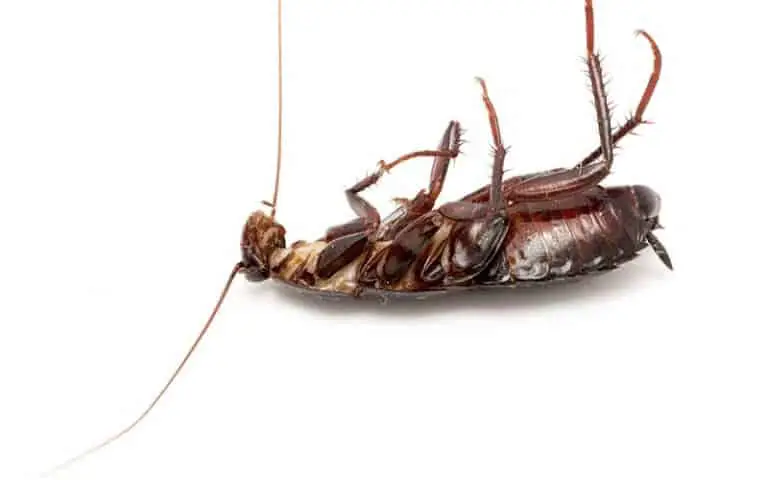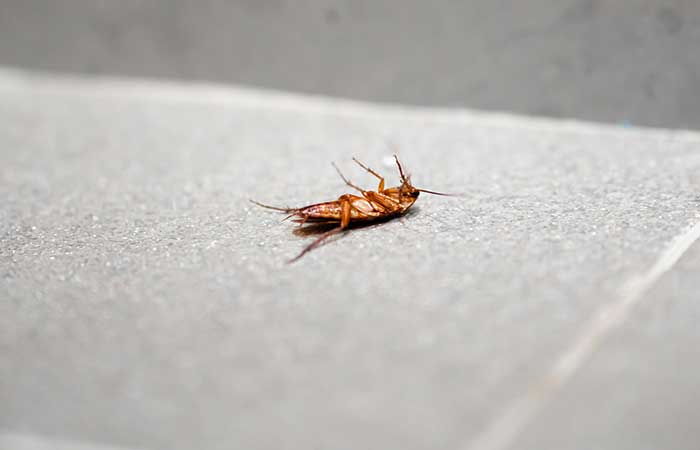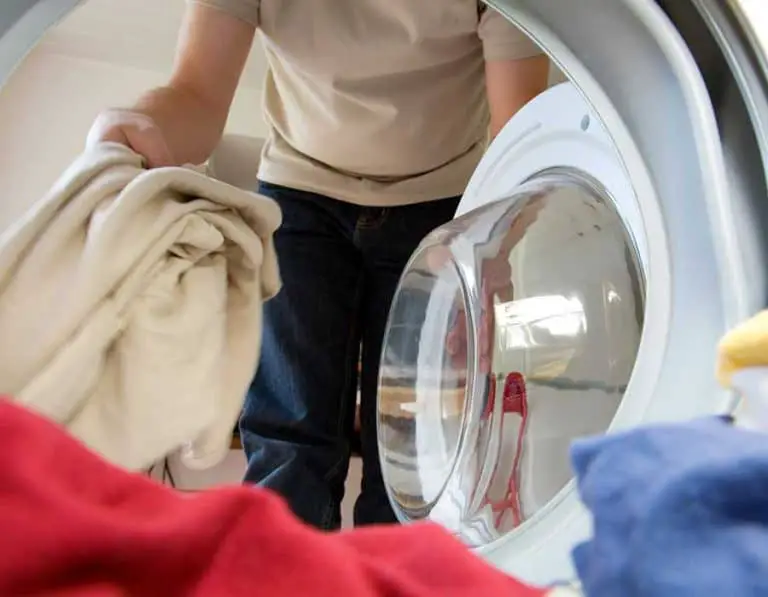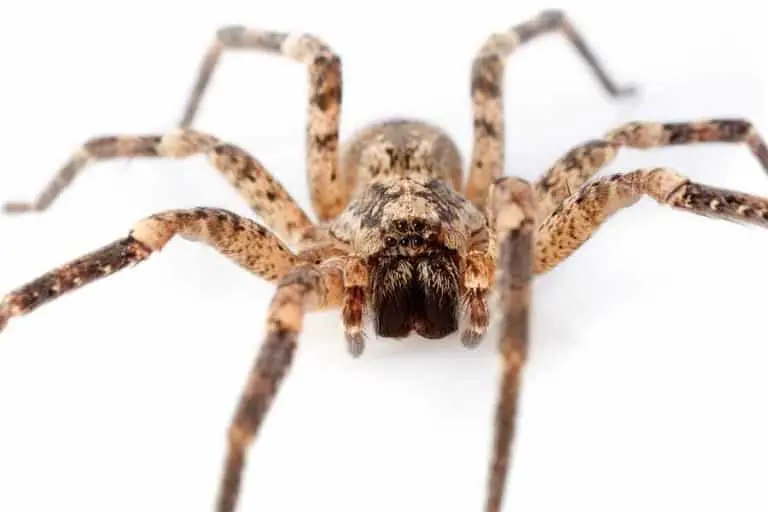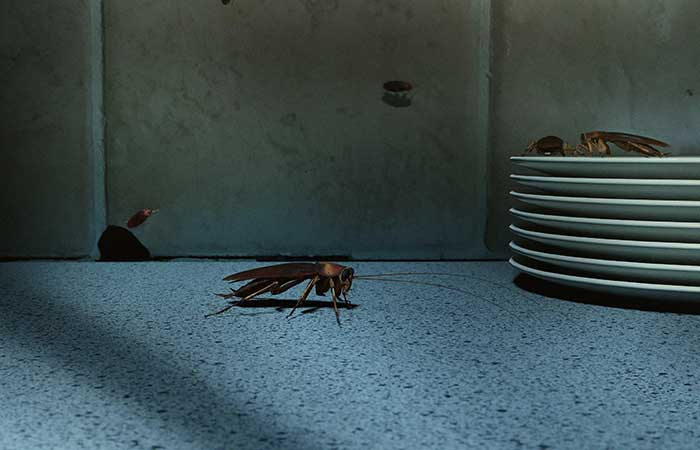Where Do Cockroaches Lay Eggs?
The early stage of a roach infestation is usually pretty subtle. One or two occasional roaches may appear and—at least in southern states—that’s not entirely unusual. Once their eggs hatch, however, the subtlety is over with and the real problems begin. But where do cockroaches lay eggs?
Cockroaches lay their eggs anywhere that is protected, covered, preferably dark, and damp. In other words, anywhere in a house that’s infrequently used, doesn’t get a lot of light, and nearby sources of water and food.
Cabinets under the sink, underneath baseboards, above crown molding, behind the washing machine, inside storage boxes, and the list goes on and on. Cockroaches—especially the American cockroach or Palmetto Roach—love oak trees.
Not only will they use it as a base of operations to invade your home, but females will also often nest there, where it’s cool and the soil is moist. From here, they can enter your home through any crack, pipe, or opening of any kind that they can find.
What Do Cockroach Eggs Look Like?
The most common cockroach in the U.S. is the German Cockroach and their eggs resemble a brown capsule, roughly a quarter of an inch in length, and light to medium brown.
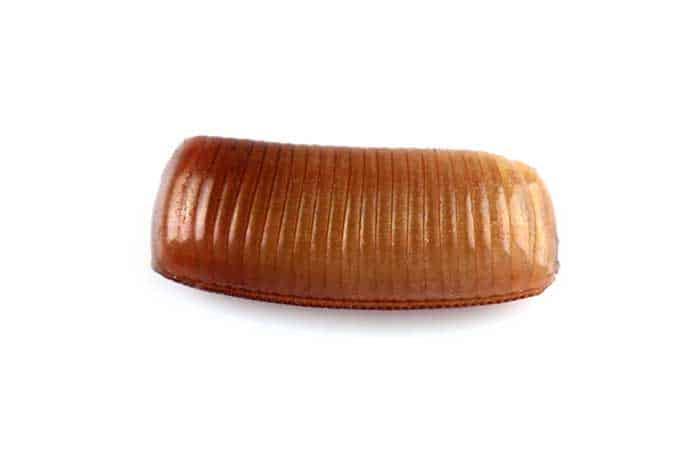
The German cockroach is not only the most common but is also able to produce up to 30,000 additional roaches from a single generation in under a year. That is the most by far of any of the common roaches found in North America.
Including the German cockroach, there are four common roaches found in North America—there are at least 70 known species of roach, but these four cause the most infestations and are found more frequently.
- American Cockroach Eggs: Another common roach found in the U.S., American Cockroach eggs are not quite as long as the German cockroach, a darker shade of brown, and about twice as wide. The surface is usually shiny, like dark wood polish.
- Oriental Cockroach: The Oriental roach looks very similar to the American cockroach but is twice the size, both in width and length. Its covering is the same shade of dark brown, with a slick, shiny surface.
- The Brown-Banded Cockroach: These roaches lay the smallest eggs of the four. they are a darker shade of brown than the German roach eggs, but retain the same striped or rippled appearance of their German cousins. These eggs are roughly two times smaller than German cockroach eggs.
- German Cockroach: Twice as large as the Oriental roach eggs, the German Cockroach eggs have tiny ripples or stripes and are several shades lighter brown than the oriental. They’re about a quarter-inch long and only slightly longer than the American cockroach eggs.
It’s not difficult to determine what a cockroach egg is versus dirt and debris. they certainly have a specific look. They can often be confused with the droppings from mice, as both are similar in size and shape.
How To Find CockRoach Eggs In the House?
The best places to look are anywhere that is dark, infrequently used, and close to a source of water. A cockroach can go an entire month without food. Although they can go a week without water, only a couple of days without turns them sluggish, lethargic, and they will generally die out in this way.
Cabinets Beneath The Kitchen/Bathroom Sink
This is a good place to start because it meets all of the above criteria. Be sure to pull everything out before looking. Check anywhere along the cracks between the bottom of the cabinet and the cabinet walls, especially if the wood is slightly warped to create additional space.
Also, be sure to look for water stains that indicate a slow leak from the pipes. Roaches love to set up shop near water. Run the faucet and see if there are any leaks. If there are, fix them as soon as possible and make sure to dry out the inside of the cabinet.
Bottoms Of Dresser Drawers
Sure, it’s not exactly close to a water source, and it’s a horrible thought reaching in to get clothes and touching roach eggs, but cockroaches sometimes frequent these areas and may lay eggs there.
Be sure to pull out every garment and shake them out for inspection. Like the cabinets, check all of the cracks along the edges where space may have been created over time. If eggs are there, destroy them and wash everything inside the dresser.
Water Pipes Of Any Kind
Check every accessible pipe in the house. Bathroom sinks, the bathtub—if any of it is accessible—the washing machine, water heater, toilets, outflow, and inflow pipes for the A/C, are all places cockroaches may use to mate and multiply.
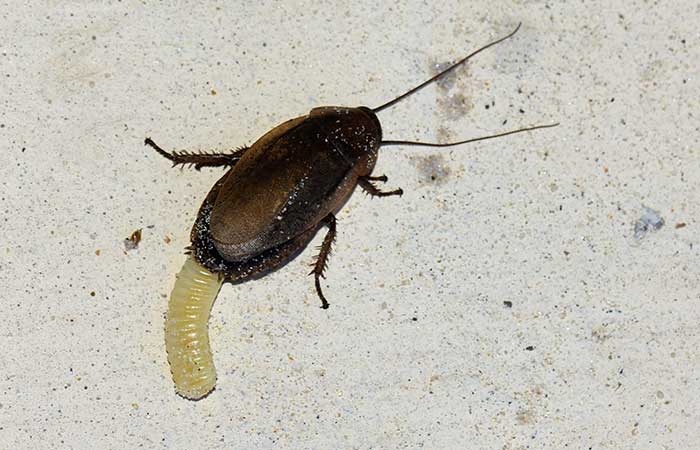
How Long Does It Take For A Cockroach Egg To Hatch?
The average timeframe for a cockroach egg to hatch is about a month. Twenty-four to thirty-eight days. The eggs are formed within a larger casing known as the ootheca.
A female cockroach may carry this around for a few days, for the entirety of the hatching process, or drop it off in a safe, concealed environment.
- American Cockroaches: A single, female cockroach can create up to 100 ootheca in her lifetime. Each ootheca will produce an average of 15 eggs. American Cockroach eggs hatch in 6 – 8 weeks.
- Brown-Banded Cockroaches: Female Brown-Banded roaches only produce about a fifth of the ootheca that their American counterparts do, with each one carrying between 10 – 20 eggs. The hatching process doesn’t begin for a good three months.
- Oriental Cockroaches: A female oriental may produce only one ootheca in her lifetime or she may produce up to eighteen. Either way, each ootheca averages around 15 – 18 eggs. For Oriental cockroaches, the eggs don’t begin to hatch for about a month.
- German Cockroaches: Female German cockroaches can produce up to 18 ootheca in their lifetime, each one carrying an average of 50 eggs. The staggering amount of eggs the females create is why the German cockroach is known for its numbers multiplying explosively. They are the most difficult of infestations to control. Worse yet, German cockroach eggs hatch within 24 hours.
Regardless of which cockroach is causing an infestation, the German cockroach is always the worst. The production cycle of the female is rapid and explosive, with only a hundred days or so for nymph German cockroaches to reach maturity once they’ve hatched.
How To Get Rid Of Cockroach Eggs
The quickest and easiest way is to hire an exterminator. Sure, it’s probably the most expensive route as well. However, when dealing with an infestation, especially of the German cockroach variety, a professional is a sure bet to immediately get results.
Another way is to use an Insect Growth Regulator:
- Control Solutions Insect Growth Regulator: This insect growth regulator targets the most common household pests, including roaches, fleas, and ants. It is applicable either indoors or outdoors.
- Archer Igr Flea Roach Tick Insect Growth Regulator: This solution is effective and yields between 8 and 16 gallons worth of insect growth regulators.
- Gentrol IGR Concentrate Insect Growth Regulator: In addition to roaches, this also targets drain flies and fruit flies and lasts up to four months before reapplication is necessary.
When it comes to insect growth regulators, it’s important to know where to go after the eggs. Roaches are crafty and will likely lay their eggs in all of the above-mentioned places, however, they’ll do so by laying their eggs in places that are difficult to see, such as in the cracks, inside the walls, underneath tightly fitting pipes.
When spraying these areas, it’s important to saturate the hard-to-reach spots and the cracks or gaps around the edges.
The last method for getting rid of cockroach eggs is to simply vacuum them up and deposit them as far away from the house as humanly possible. If necessary, seal them in heavy bags and throw them in the dumpster.
Just understand that if the dumpster is too close to the house, and the eggs hatch, the nymphs will likely find their way back.
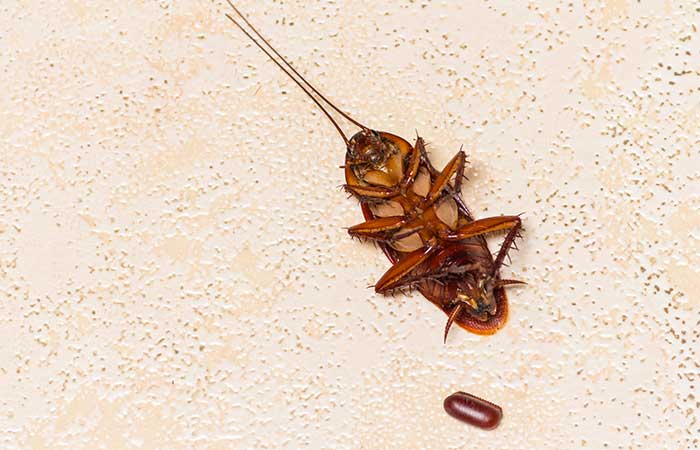
Will Cockroaches Lay Eggs On The Carpet?
The short answer is yes, they will lay eggs on the carpet. However, they’ll do so in areas that are hard to reach, such as underneath the baseboards or in areas where the carpet is loose from the floor.
This will make it a difficult prospect to vacuum them up. An exterminator can use pesticides that will reach the eggs or it may be that some of the carpet will have to come up to gain access to them.
If the carpet is dark, it’ll be even harder to visually locate the eggs. Cockroach eggs are dark brown in appearance and will easily blend in. This is especially true with long-fiber carpets, such as frieze carpets.
Does Washing Clothes Kill Roach Eggs?
Washing clothes alone will kill any roaches and eggs that have been laid inside the clothes. However, it won’t completely eradicate the problem, because if the roaches are laying eggs in the clothes, then they’re laying eggs in the dresser.
It’s a safe bet that if there are roach eggs in the dresser, roaches have infested it. The best way to deal with it is to remove all of the clothes from the dresser and treat the dresser with the pesticide of your choice.
Boric acid is an excellent DIY tool for ridding dressers—or any hiding place within the home—of cockroach infestations.
- Measure out ½ cup of boric acid, ½ cup of sugar, and ½ cup of water.
- Mix the ingredients thoroughly until you have a sort of dough.
- Using gloves, roll the dough up into balls. If you need a lot, roll the balls smaller.
- Place the boric acid dough in the dresser drawers and anywhere else that you suspect is a high traffic zone.
Cockroaches will eat the boric acid dough and it will dry them out, killing them. Also, their dead bodies will attract more roaches who will in turn eat more of the dough—along with their dead friend—and die as well.
Once the infestation has been dealt with, spray down and clean the drawers inside and out with a bleach mix or something with a strong alcohol volume to kill any bacteria that the roaches carried in with them.
After it dries, wipe it down again and it will be safe to return the washed clothes to their places. As an afterthought, place the dough around the dresser as well, especially in the back and underneath to kill any roach intruders before they get to the dresser again.
Do Roach Eggs Mean Infestation?
If roach eggs are found in the house, but there’s been little to no activity preceding it, the eggs may be the beginning. If there has been activity, it’s probably an infestation.
If there are smaller-sized roaches visibly active underneath kitchen or bathroom sinks or in other dark areas of the house, they’re probably the German cockroach variety.
On top of that, if German cockroaches are the ones that laid the eggs, it’s necessary to target the problem and get rid of it as soon as possible. 30,000 eggs is a lot of cockroaches in a single year and a year will fly by.
Get rid of the eggs in any of the ways mentioned above up to and including calling an exterminator.
Final Thoughts
Now that you know the answer to “where do cockroaches lay eggs,” it’ll be easier to locate them and get rid of the problem, especially before it reaches a level of infestation and an exterminator has to be called in.
Roaches are extremely durable insects. They’re survivors and they know every nook and cranny in which to lay eggs inside a home. When dealing with an infestation, know where to find them and know how to get rid of them.
It almost goes without saying that when dealing with German cockroaches, it’s probably best to at least seek professional advice. The number of eggs they can lay and the volume of roaches that result from it can be overwhelming even to the least squeamish adult.

